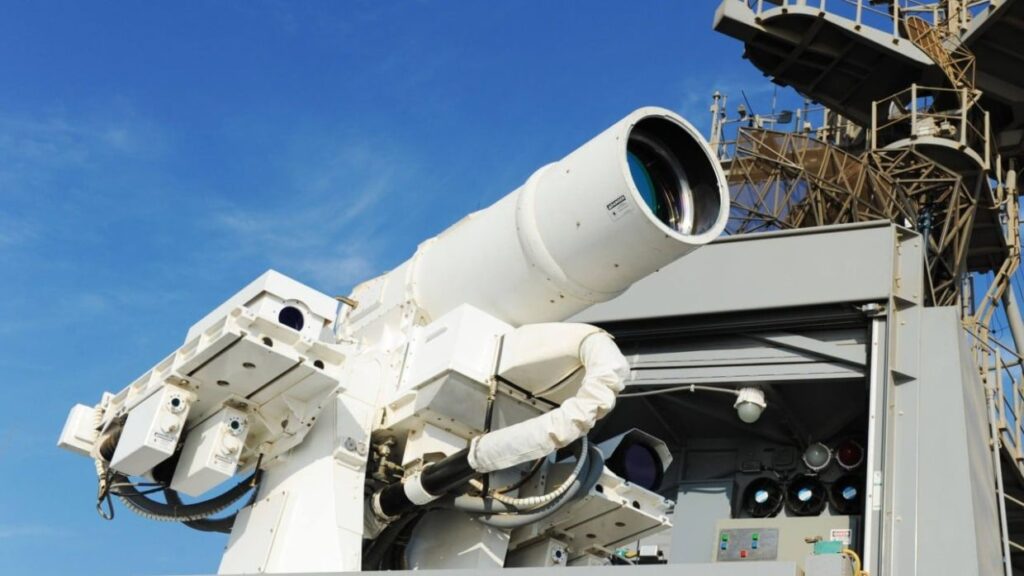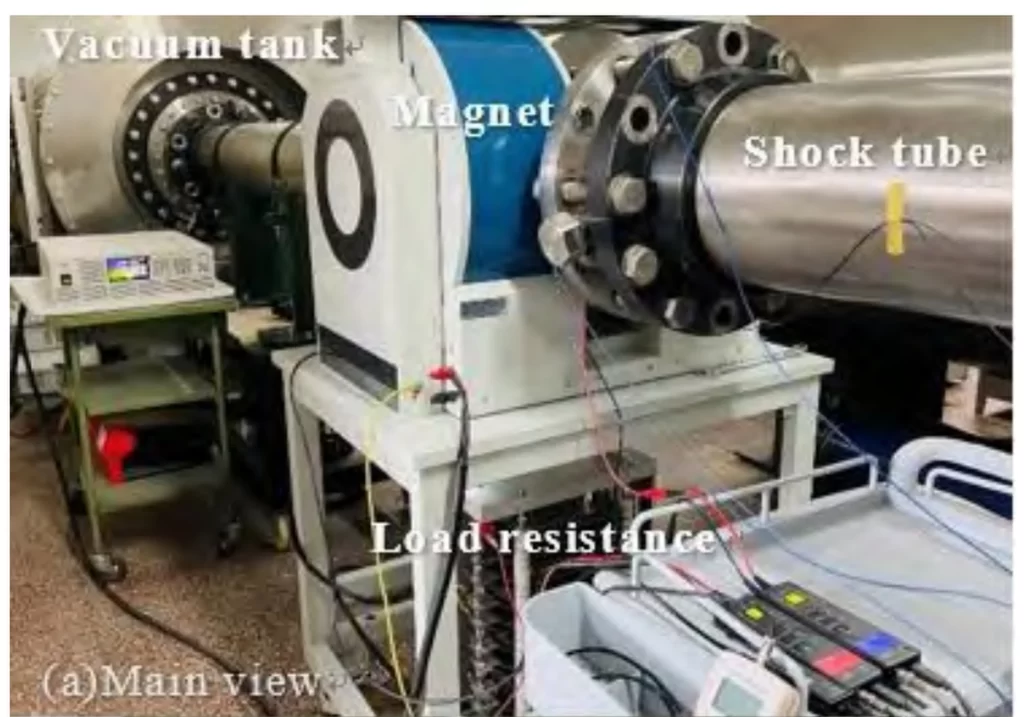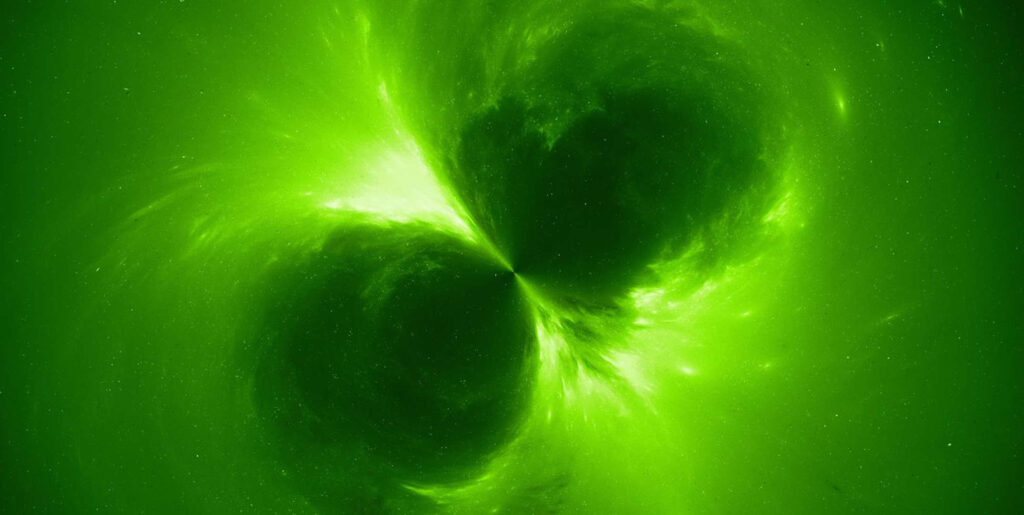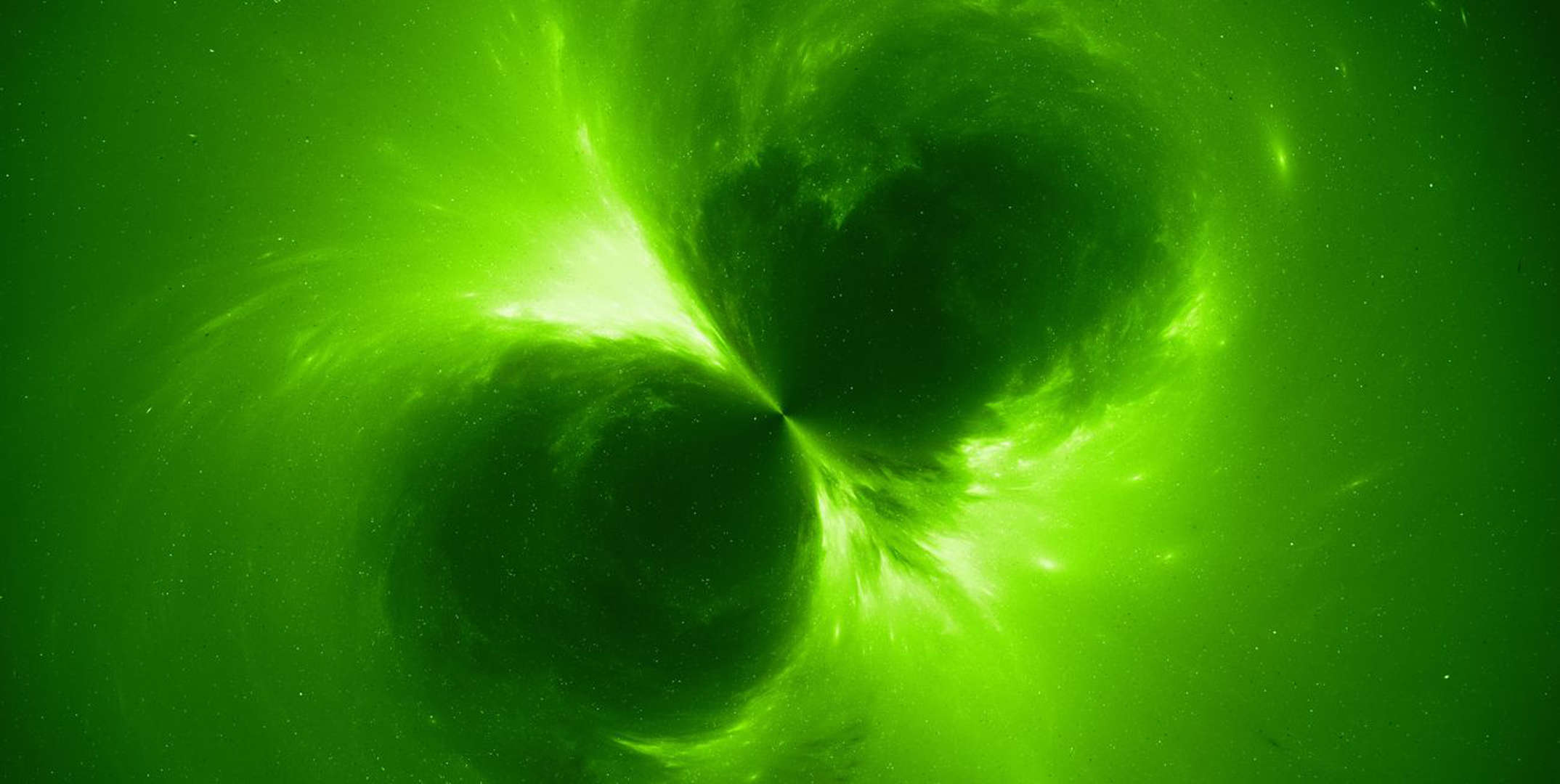Chinese scientists build hypersonic generator for power-hungry weapons of the future

Scientists in Beijing say they have developed a generator that can turn hot gas moving at hypersonic speeds into an intense electric current capable of powering futuristic weapons.
The electricity produced could be used to charge military lasers, microwave weapons, rail guns and other pulsed energy weapons, according to the team led by assistant researcher Zhang Xiaoyuan with the Institute of Mechanics under the Chinese Academy of Sciences.
According to the researchers, the technology could also be used for civilian purposes, such as devices for producing nuclear fusion energy or to send a burst of strong SOS signals in an emergency.
Do you have questions about the biggest topics and trends from around the world? Get the answers with SCMP Knowledge, our new platform of curated content with explainers, FAQs, analyses and infographics brought to you by our award-winning team.
The device produced more than 10 times the power generated in previous experiments, they said in a paper published in the peer-reviewed Chinese Journal of Theoretical and Applied Mechanics on January 19.
The generator system works by setting off explosions that turn gas into fast-moving plasma. It then converts the plasma’s energy into high-power electricity.
In one experiment, the system generated high-energy shock waves through a hydrogen-oxygen explosion. The shock waves compressed Argon gas and accelerated it to Mach 14, or 14 times the speed of sound, turning the inert gas into a highly conductive plasma full of hot, electrically charged ions.
China Built a Hypersonic Generator That Could Power Unimaginable Weapons

The plasma streamed through a component called a magnetohydrodynamics (MHD) generator, a tubelike instrument that can collect energy from the fast moving ions and convert it into electricity.
The MHD generator produced rapid pulses of electric current of up to 212 kilowatts using less than one litre (0.26 gallons) of hypersonic gas, showing its potential to release a burst of energy in an extremely short period of time for military use, according to the researchers.
The MHD generator is a solution to some of the biggest constraints in developing and deploying pulsed energy weapons, which release huge bursts of energy to destroy a target.
Conventional combustion, such as the burning of fossil fuel in a jet engine, cannot produce ionised fluids fast enough for high-power electricity generation.
This type of electricity generation typically requires a large, sophisticated facility with generators that have lots of mechanical components and require regular maintenance.
The electricity produced in these facilities needs to be stored in supercapacitors so the energy can be released in a split second. Supercapacitors are heavy and bulky, and repeat use puts a huge burden on their costly, complex components.
China’s hypersonic weapons programme was founded with the goal of developing missiles that can travel at more than five times the speed of sound and penetrate an air defence system.
Beijing’s huge investment in its hypersonic weapons programme has spurred research in many other sectors including new materials, communication technology and AI.
The Chinese government issued a new funding policy last year encouraging more scientists to participate in hypersonic research and bring the technology, now mostly used by the military, to civilian users.
“The MHD generator has no rotating parts, among its numerous unique advantages,” Zhang and colleagues wrote.
“It has a large capacity and high efficiency. There is no need for intermediate energy storage components. The energy can be directly transferred to the load without a high-power switch. And the device can start up quickly.”
Some large laser weapons under development would need a megawatt or more of electricity to destroy a target from a long distance.
China is developing a high-power microwave weapon capable of jamming planes and satellites that would reportedly require a gigawatt of input energy.
Zhang’s team said their generator system could produce one gigawatt of electricity from just five cubic metres (177 cubic feet) of hypersonic plasma.
Chinese team powers up ultra-high microwave output: paper
Other researchers have tried setting off dynamite to generate hypersonic shock waves for an MHD generator, but this approach required lots of chemical explosives and was largely abandoned because of safety concerns, Zhang’s team said.
Turning explosive energy into electricity is not easy, according to a Beijing-based researcher not involved in Zhang’s study.
An MHD generator works efficiently with gas at high temperatures. But the faster the gas travels, the more quickly it cools.
Zhang’s team was able to achieve extremely high speeds and temperatures at the same time, said the researcher who requested not to be named due to the sensitivity of the issue.
Explosions are also difficult to control, and taming this extreme process for energy production could benefit society, the researcher said.
“If this technology finds an application in power generation, we may owe the hypersonic weapons a big ‘thank you’.”
New device could protect satellites from microwave attacks, scientists say
However, military users might have reservations about the technology proposed by Zhang’s team, said the researcher, who studies the physics of high-speed fluids.
Mobile platforms for pulsed energy weapons, such as warships, planes and trucks, would have to overcome many engineering problems to be able to host a detonation shock device, he said.
Zhang’s system contains a detonation shock tunnel made of several sections of tubes, each separated by metallic membranes that allow scientists to control the explosions.
However, the Beijing-based researcher noted that reloading new membranes after each shot could be difficult on the battlefield, unless the job could be automated in a quick and reliable manner.
The power-generating explosion could also produce a loud noise that would expose the weapon’s location, he said. source
China Built a Hypersonic Generator That Could Power Unimaginable Weapons
You have our attention.

sakkmesterke//Getty Images
- Turning gas into plasma creates an intense electrical current for powering potent hypersonic weapons.
- Chinese researchers built a hypersonic generator that could power military lasers, rail guns, and microwave weapons.
- The relative compact nature of the hypersonic generator opens the scope of potential uses.
Chinese scientists say one formidable explosion inside a shock tunnel can turn hot gas into the most powerful hypersonic generator a military has ever seen—strong enough to charge military lasers, rails guns, microwave weapons, and more.
As reported by the South China Morning Post, a new peer-reviewed paper in the Chinese Journal of Theoretical and Applied Mechanics explains how the hypersonic generator turns one detonation inside a shock tunnel into enough electrical current to power hypersonic weapons of the future.
China Built a Hypersonic Generator That Could Power Unimaginable Weapons
- Turning gas into plasma creates an intense electrical current for powering potent hypersonic weapons.
- Chinese researchers built a hypersonic generator that could power military lasers, rail guns, and microwave weapons.
- The relative compact nature of the hypersonic generator opens the scope of potential uses.
Chinese scientists say one formidable explosion inside a shock tunnel can turn hot gas into the most powerful hypersonic generator a military has ever seen—strong enough to charge military lasers, rails guns, microwave weapons, and more.
As reported by the South China Morning Post, a new peer-reviewed paper in the Chinese Journal of Theoretical and Applied Mechanics explains how the hypersonic generator turns one detonation inside a shock tunnel into enough electrical current to power hypersonic weapons of the future.
The Chinese scientists were able to use a controlled detonation to turn hot gas into a plasma filled with racing ions, which converted to current. With shock waves accelerating the compressed argon gas to 14 times the speed of sound, the charged ion-filled plasma then passed through magnetohydrodynamics generators to produce electric current up to 212 kilowatts while using.26 gallons of gas. That’s enough power for a burst of energy unlike anything available now in a compact system.
“It has a large capacity and high efficiency,” the scientists write, via the SCMP. “There is no need for intermediate energy storage components. The energy can be directly transferred to the load without a high-power switch. And the device can start up quickly.” The generator also has no rotating parts, increasing efficiency and ease of use.
With some of the largest weapons in development requiring a gigawatt of input power, the researchers say they can produce that with 177 cubic feet of hypersonic plasma (that’s smaller than most vans).
China isn’t ready to deploy the new system just yet. There are plenty of logistical hurdles to sort out in how to transport a device that requires controlled detonation, and just how to handle the gas needed for a second charge when on the move. Still, if the next iteration of the science offers up an automated reloading of the technology, China’s hypersonic weapons just got a colossal burst of power. source

 Breaking News
Breaking News
 World Stage
World Stage
 Military Tech
Military Tech


 Cops Gone Wild
Cops Gone Wild 
